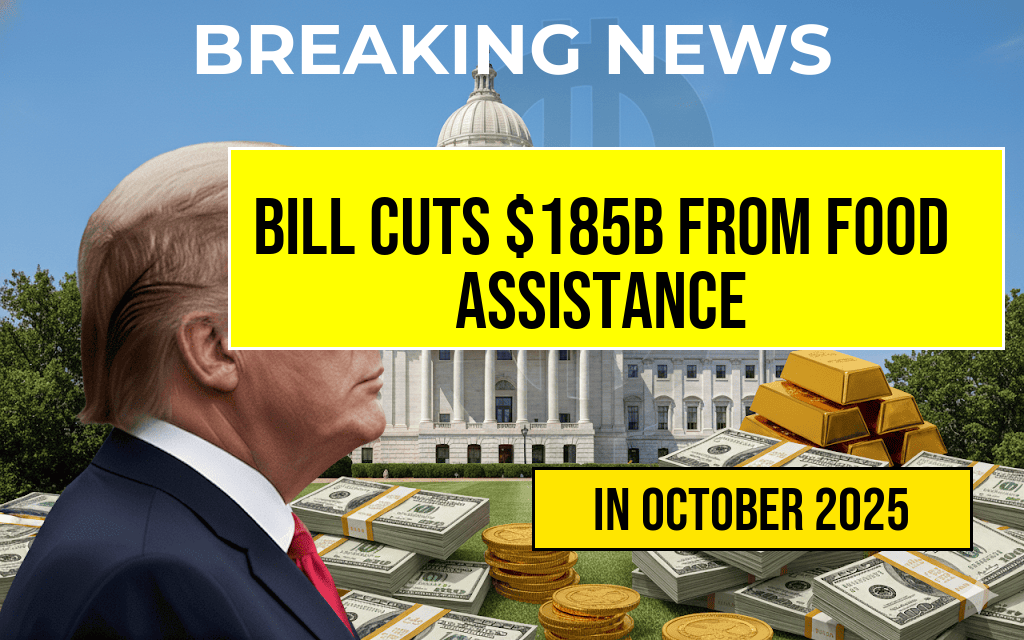Shaky Safety Net: Bill Cuts $185 Billion from Food Assistance – Impact on Your $546 Two-Person SNAP Benefits
A recent legislative proposal threatens to reshape the landscape of food assistance in the United States, with a significant $185 billion reduction projected over the next decade. The bill aims to overhaul the Supplemental Nutrition Assistance Program (SNAP), commonly known as food stamps, by imposing stricter eligibility criteria and curbing benefit levels. For the average two-person household receiving approximately $546 monthly, these changes could translate into substantial financial strain, forcing many to reevaluate their grocery budgets and potentially increasing food insecurity across vulnerable communities.
The proposed cuts come amid ongoing debates about the nation’s spending priorities and the effectiveness of social safety nets. While proponents argue that reforms are necessary to reduce dependency and promote self-sufficiency, critics warn that the reductions could exacerbate hunger and hardship for millions who rely on SNAP benefits to meet basic nutritional needs. As the legislative process unfolds, families, advocacy groups, and policymakers are closely watching how these changes might reshape America’s approach to supporting low-income households.
Understanding the Scope of the Proposed Cuts
The legislation, introduced in Congress, outlines a series of measures intended to tighten eligibility and decrease benefit amounts for millions of SNAP recipients. According to estimates from the Congressional Budget Office (CBO), these modifications could reduce federal spending on food assistance programs by roughly $185 billion over the next ten years.
Key provisions include:
- Stricter Income and Asset Tests: Households would need to demonstrate lower income levels and fewer assets to qualify, potentially excluding some families that currently receive aid.
- Benefit Reductions: The bill proposes recalculating benefit levels based on revised formulas, which could lead to an average decrease of about 10% per household.
- Work and Training Requirements: Increased mandates for able-bodied adults without dependents, potentially disqualifying those unable to meet the new criteria.
For a household of two, receiving the typical $546 monthly benefit—calculated based on income, size, and regional costs—these policy shifts could result in a loss of $50 to $70 each month, depending on individual circumstances.
Impact on Food Security and Daily Living
The potential benefit reductions threaten to undermine the basic food security of millions. According to the United States Department of Agriculture (USDA ERS), nearly 11% of American households experienced food insecurity in 2022, a figure that could rise if assistance diminishes further.
For families like the Smiths, a two-person household in Ohio, the current $546 monthly SNAP benefit covers roughly 60-70% of their grocery needs. Any reduction could force them to cut back on nutritious foods, rely more heavily on food banks, or skip meals altogether. These adjustments may have long-term health implications, especially for children and seniors.
Broader Economic and Social Ramifications
Experts warn that trimming SNAP benefits could have ripple effects beyond immediate hunger concerns. Increased food insecurity correlates with higher healthcare costs, lower productivity, and greater reliance on emergency services. A study by the Urban Institute notes that children experiencing hunger are more likely to face developmental delays and perform poorly academically, which can impact their future earning potential.
Additionally, local economies often benefit from SNAP benefits. Retailers and farmers see increased sales when recipients spend their benefits, stimulating economic activity in communities nationwide. Reduced benefits could dampen this effect and exacerbate economic disparities.
Community Responses and Policy Debates
Advocacy organizations are mobilizing to oppose the proposed cuts, emphasizing the importance of maintaining robust safety nets. Groups such as Feeding America and the Center on Budget and Policy Priorities argue that the reductions threaten to undo years of progress in combating food insecurity.
On the other side, some policymakers contend that the reforms are necessary to curb fraud and ensure that assistance reaches those who need it most. They advocate for targeted measures to improve program efficiency, rather than across-the-board benefit cuts.
What This Means for Your Household
| Current Benefit | Estimated Reduction | New Monthly Benefit |
|---|---|---|
| $546 | $50–$70 | $476–$496 |
For families relying on SNAP, even modest reductions can significantly strain their ability to afford nutritious foods. Experts recommend households consider alternative strategies, such as local food banks, community-supported agriculture (CSA) programs, or nutrition assistance through state programs, to bridge potential gaps.
Looking Ahead
As congressional debates continue, the fate of these proposed SNAP reforms remains uncertain. Stakeholders are urging legislators to balance fiscal responsibility with social compassion, emphasizing that food assistance is a cornerstone of economic stability for millions. The coming weeks will reveal whether bipartisan support can be found to modify or block the bill’s most damaging provisions, or if further cuts are inevitable.
For more information on current SNAP policies and resources, visit the USDA Food and Nutrition Service and Nutrition.gov.
Frequently Asked Questions
What is the main impact of the recent bill on SNAP benefits?
The recent bill cuts $185 billion from food assistance programs, which could significantly reduce benefits for recipients, including a typical $546 monthly benefit for a two-person household.
How will the benefit reduction affect families relying on SNAP?
Families relying on SNAP may experience decreased monthly benefits, potentially making it more challenging to afford nutritious food and increasing food insecurity.
Who will be most affected by the bill’s cuts to food assistance?
Low-income families, elderly individuals, and people with disabilities who depend heavily on SNAP benefits will be most impacted by the $185 billion reduction.
Are there any alternatives or programs to help offset the benefit cuts?
Some local food banks and community programs may offer additional support, but overall, the bill’s cuts limit the safety net, emphasizing the importance of policy changes or advocacy efforts.
What can I do to stay informed or advocate against these cuts?
You can stay informed by following news updates and advocacy groups working on food assistance policies. Engaging in community activism and contacting your representatives can help voice concerns about the impact of these benefit reductions.

Leave a Reply